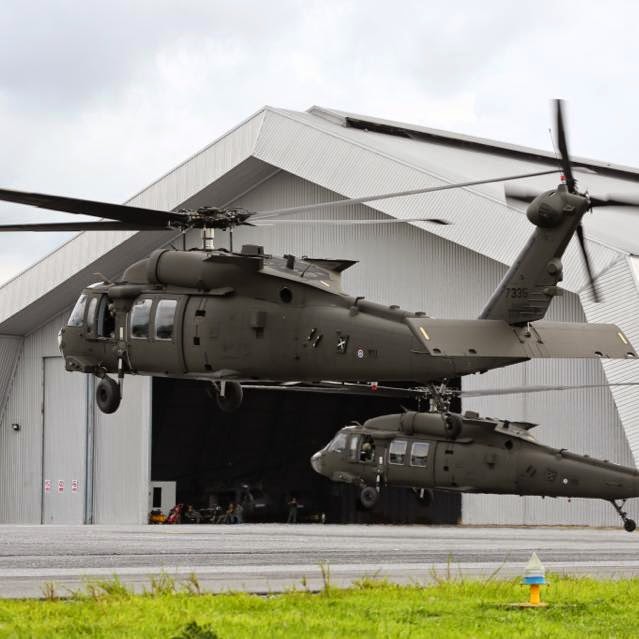Attaining Excellence: Secret Strategies for UH 60 Helicopter Maintenance
Attaining Excellence: Secret Strategies for UH 60 Helicopter Maintenance
Blog Article
Comprehending the Mechanics and Design Behind Uh 60 Helicopters
The UH-60 helicopter, frequently referred to as the Black Hawk, stands as a pinnacle of modern-day rotorcraft technology, symbolizing a mix of durable design and intricate auto mechanics. From its beginning to its current versions, the development of this airplane showcases a fusion of development and usefulness. As we peel off back the layers of the UH-60's design, a world of intricate systems and precise design emerges. Recognizing the mechanics and engineering behind this functional airplane reveals a realm where precision fulfills power, and where each component plays a critical role in achieving trip.
Background of UH-60 Helicopters
The background of UH-60 helicopters traces back to the late 1970s when the USA Army sought a advanced and versatile energy helicopter to change its aging fleet. In reaction to this need, the Sikorsky Airplane Firm created the UH-60 Black Hawk helicopter. Presented in 1979, the UH-60 swiftly came to be a staple in army operations due to its impressive capacities.
The UH-60 was created to stand out in a variety of objectives, consisting of troop transportation, clinical discharge, electronic war, and unique operations. Its capability to adapt to different roles made it an important asset to the united state Army and other army forces all over the world
For many years, the UH-60 platform has actually undertaken a number of upgrades and variants to improve its efficiency and keep rate with evolving goal requirements. These helicopters have actually seen comprehensive solution in conflicts such as the Gulf Battle, Afghanistan, and Iraq, showcasing their dependability and versatility in diverse functional environments. The UH-60's abundant history is a testimony to its enduring tradition as a top utility helicopter.

Engine and Power Solutions
Utilizing advanced propulsion technology, UH-60 helicopters are equipped with innovative engine and power systems to ensure optimal efficiency and integrity in a variety of operational scenarios. The UH-60, generally known as the Black Hawk, is powered by 2 General Electric T700-GE-701D engines, each efficient in delivering up to 1,940 shaft horse power. These turboshaft engines supply the required thrust for the helicopter to execute its goals successfully, including army transportation, medical evacuation, and fight assistance.

Rotor System and Aerodynamics
Exactly how do the rotor system and aerodynamics of UH-60 helicopters contribute to their operational effectiveness and flight abilities? The rotor system of the UH-60 helicopter plays a vital function in supplying lift and propulsion. The UH-60 includes a four-bladed, totally expressed about his blades system that enables high maneuverability and stability during flight. This design enables the helicopter to execute a vast array of goals, from transportation and clinical emptying to fight operations.
The rules of aerodynamics additionally play a vital role in the performance of UH-60 helicopters. The streamlined body and blades blade design reduce drag, permitting the helicopter to accomplish higher rates and much better gas performance. The aerodynamic layout of the UH-60 also adds to its ability to run in diverse ecological conditions, including high elevations and hot temperature levels.
Avionics and Flight Control Equipment

In its elaborate control with the blades system and aerodynamics of UH-60 helicopters, the avionics and flight control systems develop a crucial network of technologies shaping the airplane's functional capabilities. In the UH-60, these systems include electronic display screens, interaction radios, GPS navigating, weather radar, and autopilot systems.
The flight control systems of the UH-60 are accountable for translating the pilot's inputs into the appropriate modifications to the blades system, guaranteeing secure trip and maneuverability. These systems contain hydraulic actuators, servos, and computers that interact to manage the tail and main advice rotors, in addition to various other trip control surface areas. By precisely managing the helicopter's trip characteristics, these systems allow pilots to perform a large range of missions, from transport and search-and-rescue to combat operations, with accuracy and self-confidence.
Duty and Applications in Aeronautics
Avionics systems in UH-60 helicopters encompass a range of electronic systems that help in navigating, communication, surveillance, and managing numerous aircraft features. These systems consist of electronic screens, auto-pilot systems, interaction radios, General practitioner navigating tools, and weather radar. Furthermore, these systems incorporate security attributes such as autopilot settings, surface recognition warning systems, and stability augmentation systems to improve the general safety and security and operational capacities of the UH-60 helicopters in different objectives, consisting of troop transportation, clinical emptying, search and rescue, and aerial firefighting.
Final Thought
To conclude, the UH-60 helicopter is a functional useful source aircraft with an abundant history and advanced design. Its engine and power systems, rotor system, the rules of aerodynamics, avionics, and flight control systems all interact to make it a effective and trusted device. The UH-60's function and applications in aeronautics are large, ranging from military procedures to search and rescue objectives. Its proceeded development and use show its importance in the area of aeronautics (uh 60).
In its elaborate coordination with the blades system and the rules of aerodynamics of UH-60 helicopters, the avionics and flight control systems form a critical network of innovations forming the aircraft's functional abilities.The trip control systems of the UH-60 are responsible for translating the pilot's inputs into the suitable adjustments to the blades system, making sure secure trip and maneuverability. Avionics systems in UH-60 helicopters encompass an array of digital systems that aid in navigation, interaction, tracking, and managing different aircraft functions. In addition, these systems integrate safety and security attributes such as autopilot settings, terrain awareness cautioning systems, and security augmentation systems to enhance the overall security and functional abilities of the UH-60 helicopters in numerous objectives, consisting of army transport, clinical evacuation, search and rescue, and airborne firefighting.
Its engine and power systems, blades system, the rules of aerodynamics, avionics, and flight control systems all work with each other to make it a reliable and reputable machine.
Report this page